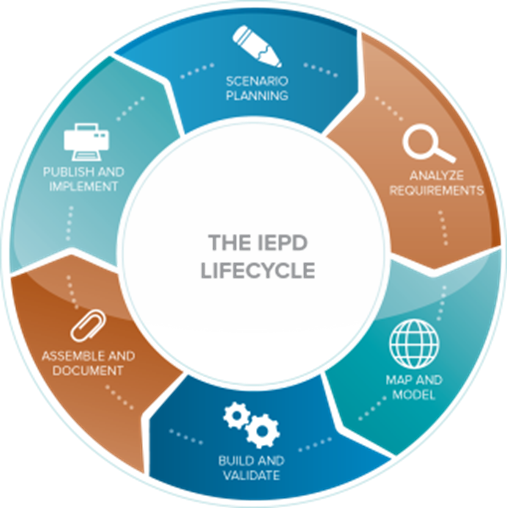IEPD Lifecycle
An Information Exchange Package Documentation (IEPD) developer designs, builds, and validates the components (artifacts) of an Information Exchange Package(IEP). The process consists of a six-phase lifecycle.

Lifecycle Phases
-
Scenario Planning: Review background information related to your information exchange, assess resource impact, understand business context, and identify information exchange business scenarios.
-
Analyze Requirements: Further elaborate on the information exchange scenario to understand and document the business context and data requirements.
-
Map and Model: Compare the data requirements for the exchange gathered in the last step to what is available in NIEM. Record results in a mapping spreadsheet and plan how requirements that aren’t available in NIEM should be modeled and added as IEPD extensions.
-
Build and Validate: Create subset and extension schemas for the IEPD based on the mapping and modeling decisions made in the previous step. Check that schemas are valid and NIEM-conformant. Build and validate sample instances for additional testing.
-
Assemble and Document: Finalize the documentation and other IEPD artifacts and then package all related files for the IEPD into a single, self‐contained, self-documented, portable archive file.
-
Publish and Implement: Publish the IEPD for search, discovery, and reuse, and implement the IEPD for production.